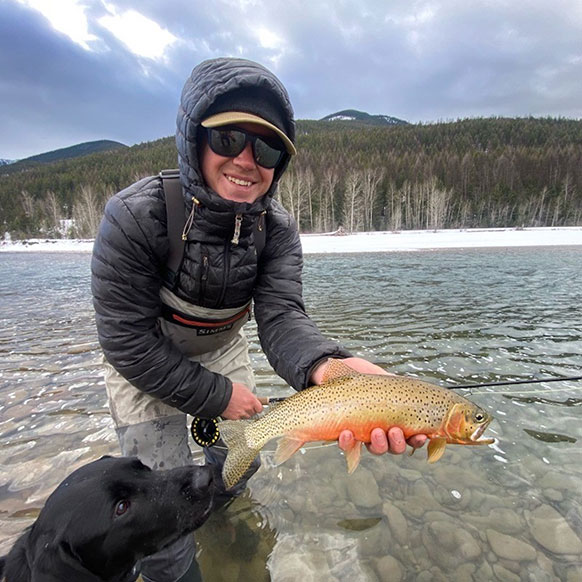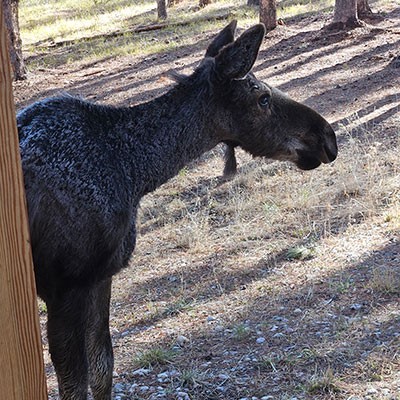No Slides Entered.
Hall’s Milkweed Rediscovered in Wyoming After 60 years!
This article was originally published by the Wyoming Native Plant Society and written by Dorothy Tuthill. We’ve republished it here with minor stylistic edits.
In July 1916, Dr. Aven Nelson, founder of the Rocky Mountain Herbarium, collected a specimen of Hall’s milkweed, Asclepias hallii A. Gray, in Albany County, Wyoming, from a sandy ravine in a location he called “Sodergreen’s.” We can’t know if he was surprised to find this species where he did—perhaps not, since the flora was not well known then, and Hall’s milkweed had been collected near Denver as recently as 1877. When Dr. C. L. Porter, Nelson’s successor as the herbarium curator, found Hall’s milkweed in the Laramie Basin, he probably wasn’t surprised at all, since it was already known from the vicinity. However, Porter’s 1948, 1949, and 1958 collections were the last time this milkweed was seen in Wyoming for many decades, despite an exceptional endowment of botanists and students of botany in the Laramie area.
Given all the botanists in the area, couldn’t someone relocate earlier-known populations? By “Sodergreen’s,” Dr. Nelson may have meant the Sodergreen Ranch, headquartered about five miles NE of the hamlet of Woods Landing, but the ranch is (and was) a big place closed to the public. There is also a Sodergreen Road. (also on private property) and a Sodergreen Lake (public access—no Hall’s milkweed has been seen there). Dr. Porter was not much better about specifying location: 10 miles southwest of the cement plant on Sand Creek Road should be findable, but the 1949 “gravelly hills near Woods Landing” and 1958 “clayey, gravelly slopes near Woods Landing” are probably not. And yet…
Hall’s milkweed was rediscovered in 2020 on gravelly hills not too far from Woods Landing! Evan Barrientos, a nature enthusiast who works for Audubon Rockies, was walking off-trail on the west side of Sheep Mountain, at approximately 8200 ft, when he encountered the milkweed and made a submission to iNaturalist for the 2020 Virtual Wyoming BioBlitz. Evan’s observation can be viewed here.
As a result of this find, the Wyoming Natural Diversity Database (WYNDD) has changed the state rank of Hall’s milkweed from SH (known only from historic records) to S1 (critically imperiled), and the number of SH taxa in Wyoming has dropped from 26 to 25. Notably, this is the first iNaturalist record to be directly incorporated into the WYNDD database; it was accepted for WYNDD entry in light of the photo quality and the research grade status that Evan’s observation earned. The current Wyoming Field Guide entry can be viewed here. All parties hope to be able to collect a specimen for the Rocky Mountain Herbarium this summer, thus continuing the line of evidence for Hall’s milkweed in Wyoming.
Hall’s milkweed is the second SH-ranked species to be rediscovered in recent years, both in Medicine Bow National Forest; Polystichum scopulinum (mountain hollyfern) was recently rediscovered in the Laramie Peak area as described in a recent Castilleja article (Pappas 2022).
Hall’s milkweed is at the northern end of its range in Wyoming and most likely to be encountered in the mountains and basins of central and southern Colorado. However, its range is much broader, encompassing mountain ranges of Arizona, New Mexico, Utah, and Nevada, and east into the Colorado plains. It inhabits rocky slopes or roadsides in sagebrush steppe, pinyon pine-juniper woodlands, ponderosa pine forests, and mixed conifer forests, from 6,000 to over 8,000 ft (1800-2400+ m) (Nabhan et al 2015). Fishbein (in prog.) states that Hall’s milkweed is the only milkweed likely to be encountered at elevations above 8200 ft (2500 m). However, it is common nowhere. According to NatureServe, Hall’s milkweed is vulnerable (S3) in Colorado, critically imperiled (S1) in Utah, and vulnerable (G3) across its entire range. It has no state rank assigned in Nevada, Arizona, or New Mexico.
Participate in this year’s Statewide Wyoming BioBlitz and maybe you too will rediscover a plant in Wyoming!
References
Fishbein, M. In prep. Asclepias. For: Flora of North America Editorial Committee, eds. 1993+. Flora of North America North of Mexico. 22+ vols. New York and Oxford. Vol. 14.
Nabhan, G., S. Buckley, and H. Dial. 2015. Pollinator Plants of the Desert Southwest: Native Milkweeds (Asclepias spp.). USDA-Natural Resources Conservation Service, Tucson Plant Materials Center, Tucson, AZ. TN-PM-16-1-AZ.
Pappas, G. 2022. Fun finds on the Medicine Bow National Forest. Castilleja 41(4), p 3-5.
Share This Post

Social Media
Latest News



Archives
- All
- October 2025
- August 2025
- July 2025
- June 2025
- May 2025
- April 2025
- March 2025
- February 2025
- January 2025
- November 2024
- October 2024
- September 2024
- August 2024
- July 2024
- June 2024
- May 2024
- April 2024
- March 2024
- February 2024
- January 2024
- December 2023
- November 2023
- August 2023
- July 2023
- April 2023
- September 2022
- August 2022
- July 2022
- June 2022
- May 2022
- April 2022
- March 2022
- February 2022
- January 2022
- December 2021
- November 2021
- October 2021
- September 2021
- August 2021
- May 2021
- April 2021
- March 2021
- October 2020
- August 2020
- July 2020
- January 2020
- March 2019

